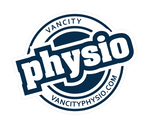Let me ask you something:
What are some of the must-do exercises you can think of right now?
Squat? Bench press? Dead-lift? Perhaps even push-ups, Bulgarian split squats, and pull-ups?
Sure, all of these exercises are fantastic and beneficial. They build muscle mass, help us get stronger, and make us more functional.
But the hip thrust is another must-do exercise that doesn’t receive nearly as much attention as it should. Today, we’ll take an in-depth look at the movement, what makes it so great, and how you can start doing it right away.
Let’s get to it.
What Is The Hip Thrust?
The hip thrust is one of the best glute-building exercises out there. It’s designed to help you build strength, power, athleticism, and muscle mass by teaching proper hip extension.
Hip extension is vital for everyone because the hips play an integral role in our health and ability to move. The primary hip extensors - the glutes and hamstrings - are major muscle groups that produce a lot of force and assist in many movements, including the squat and dead-lift. Hip extension is also vital for activities like running and jumping.
Strong hips and hip extensors are also vital for the proper alignment of the pelvis and spinal support.
Thanks to its unique pattern, the hip thrust requires great glute engagement to perform each repetition. Doing it regularly improves your ability to extend your hips, which brings about tremendous benefits.
What Makes Hip Thrusts So Fantastic
There are plenty of activities that strengthen the hips, glutes, and hamstrings. So, what makes the hip thrust so unique?
The most notable benefit is the fantastic overload potential. Many body weight exercises do an excellent job of training our glutes, but they typically lack an overloading potential. The hip thrust is different because you get to perform it with a barbell. In doing so, you can load it up with as much weight as you can handle at the moment and slowly work on adding more.
It’s not uncommon to eventually hip thrust well into the 300, 400, and even 500-pound range. By that point, you can bet that your glutes and hamstrings will be powerful and developed. Plus, back strength is not a limiting factor for the hip thrust, which means you can emphasize your glutes with a large load.
Another significant benefit of the hip thrust is its safety profile. Sure, this is a heavy compound movement, and you need to be mindful of your technique. But, unlike movements like the dead-lift, where the risk of error is high, hip thrusts are relatively straightforward, and there is little you can mess up, especially if you learn them with the help of a coach.
How to Start Doing Hip Thrusts Today
The best way to get started with the hip thrust is to look at Bret Contreras. He is a true expert in exercise physiology and has spent many years learning the movement and teaching it to clients.
All you need to start with this movement is a gym bench and barbell. You can also load this movement with a band, a dumbbell, kettle bell, chain, or sandbag. If you don’t have any equipment, you can start with the body weight version and work on the technique. Once you’re comfortable enough, you can start doing a single-leg hip thrust.
Book a consultation with Jack Perry today: https://vancityphysio.janeapp.com/
Follow us on Instagram for more information: VanCity Physio (@vancityphysiotherapy)


